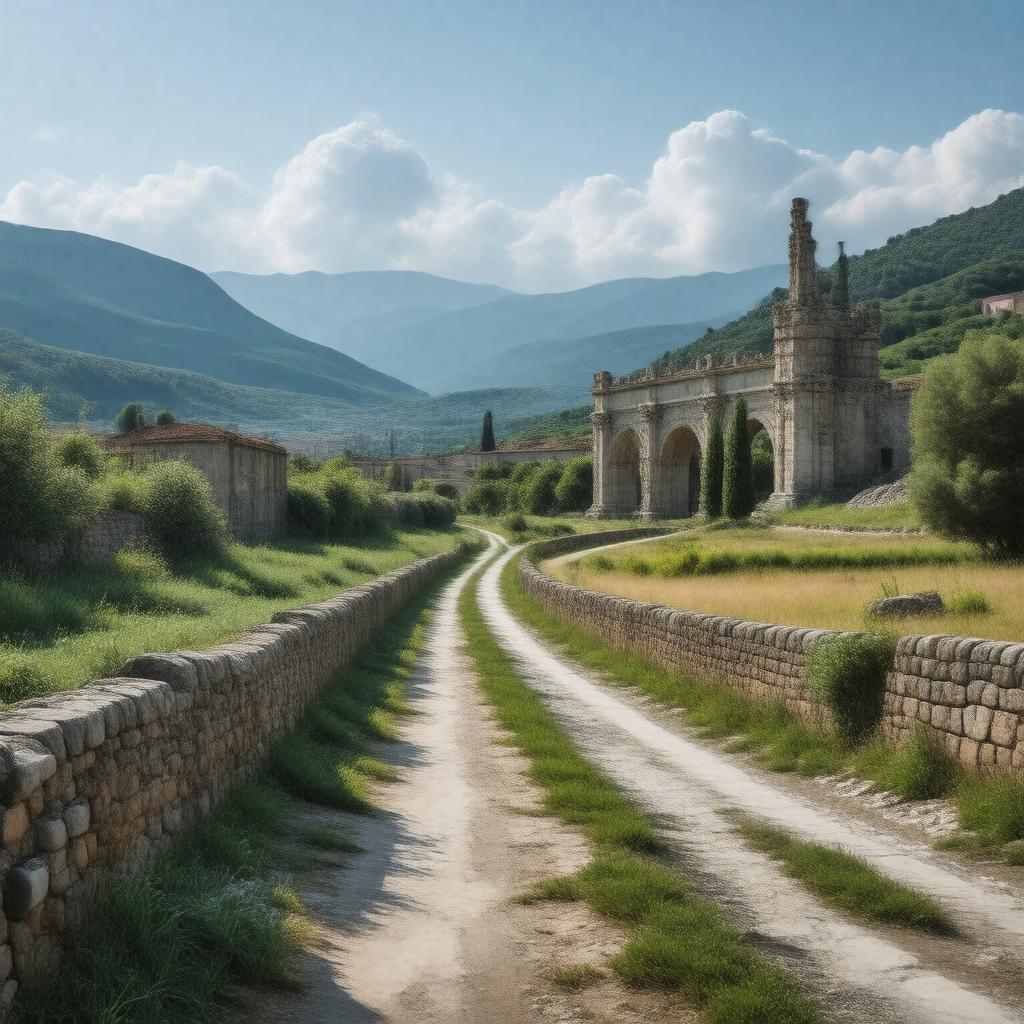Prompt
"Generate an image of a ancient Roman road, specifically the Via Flaminia, stretching through the Italian countryside, crossing the Apennine Mountains, and passing through historic towns, with Ponte Milvio bridge in the foreground and Arch of Augustus in the background, in a realistic and detailed style, reminiscent of ancient Roman architecture and engineering."

